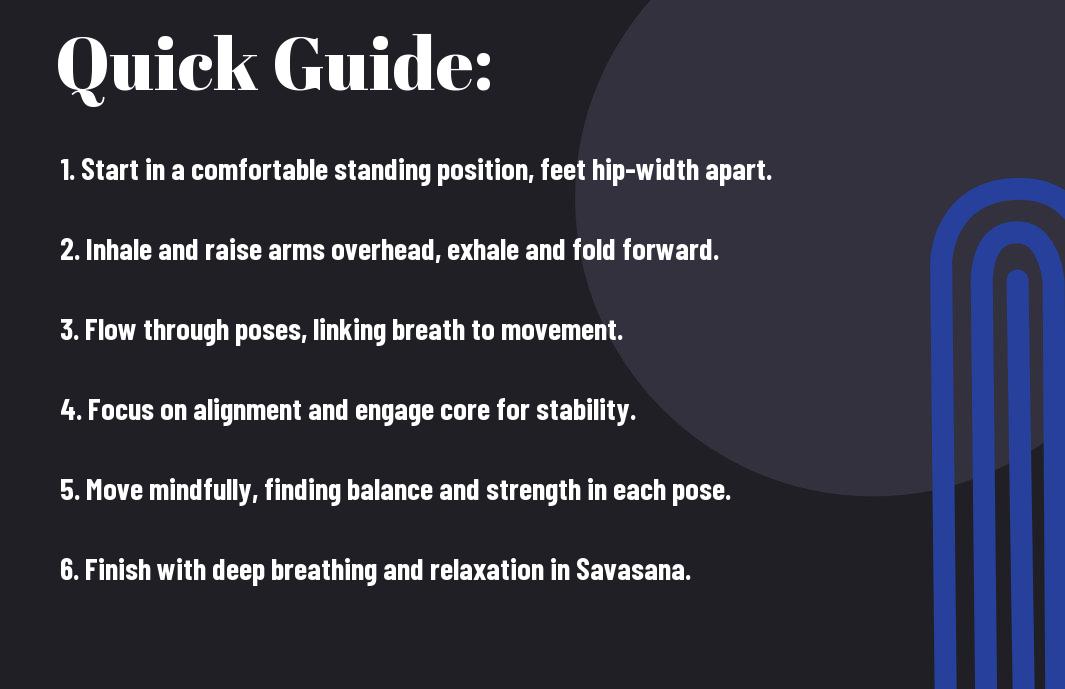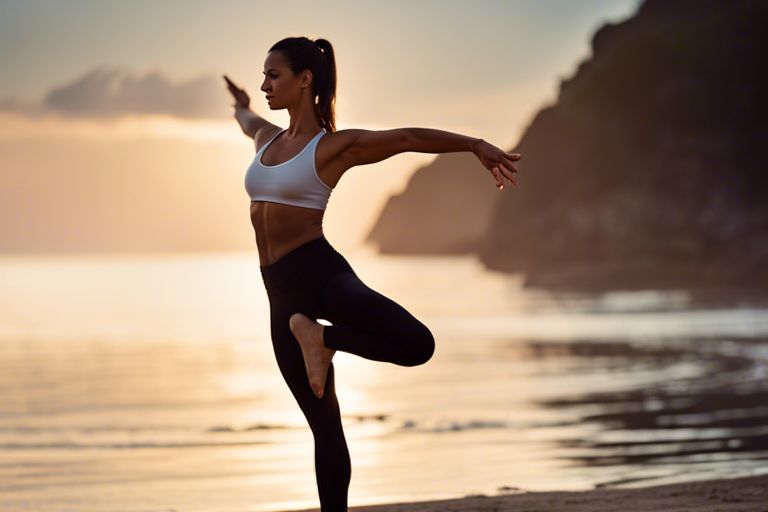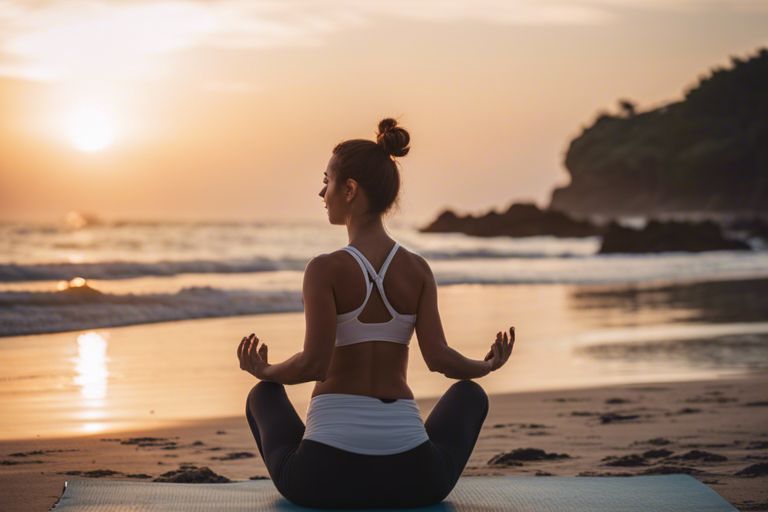Embrace the transformative power of Vinyasa yoga, a dynamic practice that seamlessly weaves movement and breath to create a moving meditation. In this guide, discover how Vinyasa yoga can help you cultivate balance, focus, and resilience both on and off the mat. Learn about the flowing sequences of poses that challenge your strength and flexibility while enhancing your mental clarity and inner peace. Dive into the world of Vinyasa yoga and experience the magic of moving with intention and grace.
Key Takeaways:
- Balance through Movement: Vinyasa yoga emphasizes the importance of flowing movements to enhance balance by connecting breath with motions, improving stability and coordination.
- Focus and Mindfulness: The rhythmic sequences of Vinyasa yoga help in cultivating focus and mindfulness, as practitioners align their movements with their breath, fostering a sense of presence and mental clarity.
- Resilience and Strength: Regular practice of Vinyasa yoga builds physical resilience and strength by challenging the body with dynamic movements, supporting overall fitness and well-being.

Understanding Vinyasa Yoga
Definition and Origins
Definition: Vinyasa yoga is a dynamic practice that connects movement to breath. The word “vinyasa” can be translated as “arranging something in a special way,” which in the context of yoga refers to a specific sequence of poses that flow together. This style of yoga is known for its fluidity and continuous motion, creating a dance-like quality in your practice.
Principles and Philosophy
With its emphasis on linking breath to movement, vinyasa yoga promotes a sense of mindfulness and presence on the mat. Each movement is synchronized with either an inhale or an exhale, helping to anchor your awareness in the present moment. This focus on the breath can help quiet the mind and cultivate a meditative state during your practice.
Origins: Vinyasa yoga has its roots in the ancient practice of Ashtanga yoga, which was brought to the West by Sri K. Pattabhi Jois. Vinyasa builds upon the foundation of Ashtanga, but offers more flexibility and creativity in the sequencing of postures. This style of yoga has gained popularity for its ability to create a balanced and energizing practice that challenges both the body and the mind.

Types of Vinyasa Yoga Movements
Clearly, understanding the different Vinyasa yoga movements can enhance your practice and deepen your connection to the flow of your breath and body. By incorporating a variety of movements, you can find balance, focus, and resilience in your practice. Knowing how each type of movement can benefit you allows you to create a well-rounded practice that caters to your individual needs.
| Sun Salutations (Surya Namaskar) | Standing Postures (Tadasana) |
| Balancing Postures (Vrksasana) | Seated Postures (Dandasana) |
| Forward Folds (Paschimottanasana) |
Sun Salutations (Surya Namaskar)
You are probably familiar with Sun Salutations and their flowing sequences that warm up your body and energize you for your practice. This series of movements helps to build strength, flexibility, and mindfulness. The repetitive nature of Sun Salutations allows you to synchronize your breath with movement, creating a moving meditation that enhances your focus and presence on the mat.
Standing Postures (Tadasana)
Now, standing postures like Tadasana (Mountain Pose) are foundational in Vinyasa yoga practice. These postures help to improve your posture, balance, and stability. By grounding through your feet and lengthening through your spine, you can cultivate a sense of strength and rootedness in your practice.
Namaskar, Standing postures not only strengthen your legs and core but also help you to find stability and alignment in your practice. By focusing on your alignment in Tadasana and other standing postures, you can improve your overall posture and body awareness.
Balancing Postures (Vrksasana)
Little balancing postures like Vrksasana (Tree Pose) challenge your stability, focus, and concentration. By rooting down through one foot and finding your balance, you can strengthen your muscles and improve your coordination. Balancing postures require both strength and flexibility, helping you to develop a deeper mind-body connection.
Postures, Balancing postures encourage you to find your center and stay present in the moment. They teach you to embrace imperfection and find grace in moments of wobbling, translating these lessons off the mat and into your daily life.
Seated Postures (Dandasana)
Types of seated postures like Dandasana (Staff Pose) help to stretch your hamstrings, improve your posture, and cultivate a sense of grounding. Seated postures are often used for relaxation and introspection, allowing you to turn your focus inward and quiet the mind.
Another, Seated postures provide a counterbalance to more dynamic movements in your practice, promoting a sense of calm and stillness. By incorporating seated postures into your practice, you can create a more balanced and well-rounded yoga routine.
Forward Folds (Paschimottanasana)
Clearly, forward folds like Paschimottanasana (Seated Forward Bend) help to stretch your hamstrings, release tension in your back, and calm the mind. These soothing postures can also aid digestion and promote relaxation. Postures like Paschimottanasana encourage you to surrender and let go, allowing you to release physical and emotional tension stored in the body.
Tips for Effective Vinyasa Yoga Practice
Now that you have launched on your journey of practicing Vinyasa Yoga, here are some vital tips to enhance your experience:
- Breathing Techniques: Incorporate Pranayama techniques to synchronize breath with movement for a more mindful and focused practice. For more guidance on breathing techniques, check out this blog on Yoga Flow: Finding Inner Peace and Strength – ASFA.
- Alignment and Body Awareness: Pay attention to proper alignment and body awareness in each pose to prevent injuries and maximize the benefits of the practice.
- Transitions and Flow: Focus on seamless transitions between poses to maintain the flow of movements and cultivate a sense of grace in your practice.
- Modifying for Different Levels: Adjust the intensity and complexity of poses to suit your level of practice, whether you are a beginner or advanced yogi.
Though each tip serves as a pillar of a successful Vinyasa practice, integrating them harmoniously is key to unlocking the full potential of this dynamic yoga style.
Breathing Techniques (Pranayama)
Some of the Pranayama techniques include Ujjayi breath, Kapalabhati breath, and Nadi Shodhana (alternate nostril breathing). These techniques not only help in regulating breathing patterns but also aid in calming the mind and maintaining focus throughout the practice.
Alignment and Body Awareness
The practice of Vinyasa Yoga emphasizes the importance of alignment and body awareness to prevent strain on joints and muscles. Proper alignment ensures that you are getting the most out of each pose while minimizing the risk of injuries.
Transitions and Flow
Effective transitions between poses are crucial in maintaining the flow of the practice, creating a seamless sequence that feels like a dance. Focus on moving with intention and grace to experience the meditative quality of Vinyasa Yoga.
Modifying for Different Levels
Tips for modifying poses based on different levels of practice include using props like blocks or straps, adjusting the depth of poses, and taking breaks whenever needed. Awareness of your body’s capabilities and limits is key to progressing safely in your Vinyasa practice.
Step-by-Step Guide to Vinyasa Yoga Sequences
Once again, if you are looking to combine Primal Strength and Vinyasa Yoga: A Harmonious Union, you can find a great resource here.
| Morning Routine for Energy and Focus | Afternoon Sequence for Balance and Calm |
| There’s nothing like starting your day with a rejuvenating yoga sequence that combines strength-building poses with energizing flows. Begin by focusing on Sun Salutations to wake up the body and mind. Follow this with standing poses like Warrior I and II to build endurance and focus. | Balance your day with an afternoon sequence that encourages grounding and calmness. Incorporate poses like Tree Pose and Child’s Pose to center yourself and release any tension built up throughout the day. |
Morning Routine for Energy and Focus
Balance your day with an afternoon sequence that encourages grounding and calmness. Incorporate poses like Tree Pose and Child’s Pose to center yourself and release any tension built up throughout the day.
Evening Practice for Relaxation and Resilience
Some days can be challenging, but winding down with an evening yoga practice can help you relax and build resilience. End your day with gentle stretches like Forward Fold and Pigeon Pose to release any remaining stress from the day.
Guide: Remember to listen to your body and modify any poses as needed. Enjoy the journey of connecting breath with movement and embrace the flow of Vinyasa Yoga for balance, focus, and resilience.
Factors Affecting Vinyasa Yoga Practice
Age and Flexibility
For vinyasa yoga practitioners, one of the key factors influencing their practice is age and flexibility. While young practitioners may naturally have more flexibility, older practitioners can still benefit from vinyasa yoga by focusing on gradually improving their flexibility over time. Flexibility is crucial for executing various poses and transitions smoothly in a vinyasa flow. Your flexibility level also affects your ability to prevent injuries during practice. Though age may play a role in flexibility, consistent practice can lead to improvements regardless of age.
Injury and Modification
With any physical activity, the risk of injury is present, and vinyasa yoga is no exception. In vinyasa yoga, listening to your body and knowing when to modify poses is crucial to prevent injuries and promote a safe practice. If you have pre-existing injuries or limitations, it’s crucial to communicate with your instructor to receive appropriate modifications tailored to your needs. Modifications can help you maintain the flow of your practice while ensuring your safety. With proper modifications, you can continue reaping the benefits of vinyasa yoga without exacerbating existing injuries or causing new ones.
Vinyasa yoga promotes a sense of mindful movement and self-awareness, encouraging practitioners to honor their bodies and make necessary adjustments to prevent injuries.
Environment and Space
While practicing vinyasa yoga, the environment and space where you practice can significantly impact your experience. A clutter-free and peaceful environment can help you focus better and feel more at ease during your practice. It’s crucial to have enough space to move freely and perform poses without any obstructions. Affecting positive atmosphere and energy in the room can enhance your vinyasa flow and deepen your practice.
Creating a dedicated space for vinyasa yoga practice that promotes calmness and mindfulness can elevate your overall experience and allow you to fully immerse yourself in the practice.
Music and Atmosphere
An crucial element that can enhance the vinyasa yoga experience is the choice of music and overall atmosphere in the practice space. Calming music can help you synchronize your breath with movement, leading to a more meditative and focused practice. An uplifting atmosphere can inspire you to push your limits and stay present throughout the flow, promoting resilience and mental strength in your practice.
Pros and Cons of Vinyasa Yoga
Not every form of exercise is perfect, and Vinyasa yoga is no exception. It comes with its own set of advantages and disadvantages. Below is a breakdown of the pros and cons of practicing Vinyasa yoga:
| Pros | Cons |
| Improves flexibility | Risk of injury if not performed correctly |
| Strengthens muscles | Potential for overexertion |
| Enhances balance | May lead to distraction due to continuous movements |
Physical Benefits (Strength, Flexibility, Balance)
You can expect Vinyasa yoga to help you improve your strength, flexibility, and balance through a series of flowing movements that engage various muscle groups. The dynamic nature of Vinyasa yoga challenges your body in different ways, leading to a more toned physique.
Mental and Emotional Benefits (Focus, Calm, Resilience)
Yoga is not just about the physical aspect; it also offers numerous mental and emotional benefits. The focus required to move through the poses with the breath helps you cultivate a sense of calm and focus that can carry over into your daily life. Additionally, the flowing nature of Vinyasa yoga can help you build resilience by learning to adapt to changes and challenges with grace.
Vinyasa yoga is known for its ability to improve focus, promote a sense of calm, and build resilience in practitioners. By syncing breath with movement, Vinyasa yoga can help you stay present and centered, even in the face of distractions or stress.
Potential Drawbacks (Injury, Overexertion, Distraction)
The flowing sequences in Vinyasa yoga can increase the risk of injury if poses are not performed with proper alignment and awareness. There is also a potential for overexertion if you push yourself too hard without listening to your body’s limits. Furthermore, the continuous movements in Vinyasa yoga may sometimes lead to distraction, affecting the quality of your practice.
The practice of Vinyasa yoga offers numerous benefits, but it is important to approach it mindfully and with awareness to balance the potential drawbacks. By paying attention to your body, practicing with proper form, and staying focused, you can enjoy the advantages of Vinyasa yoga while minimizing the risks.
Summing up
Conclusively, “Embrace The Flow – Vinyasa Yoga Movements For Balance, Focus, And Resilience” offers a comprehensive guide to incorporating Vinyasa yoga into your daily routine. The book provides clear instructions and illustrations to help readers understand the various movements and poses, promoting balance, focus, and resilience in both the mind and body.
By embracing the flow of Vinyasa yoga, individuals can cultivate a sense of mindfulness, improve their physical strength, and enhance their mental clarity. This book serves as a valuable resource for beginners and experienced yogis alike, empowering readers to harness the power of Vinyasa yoga for overall well-being and self-discovery.
FAQ
Q: What is Vinyasa Yoga?
A: Vinyasa Yoga is a style of yoga that coordinates movement with breath to flow from one pose to the next. It is often referred to as “Flow Yoga” because of the smooth way the poses run together.
Q: How can Vinyasa Yoga help with balance?
A: Vinyasa Yoga helps improve balance by focusing on transitions between poses, which require concentration and stability. By practicing balancing poses and smooth transitions, Vinyasa Yoga can enhance your overall balance and coordination.
Q: How does Vinyasa Yoga promote focus and resilience?
A: Vinyasa Yoga promotes focus by encouraging practitioners to stay present and focused on their breath and movements. It also builds resilience by challenging individuals to move through poses with strength and grace, teaching them to bounce back from difficulties both on and off the mat.











